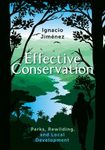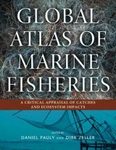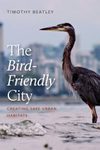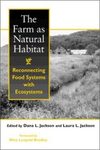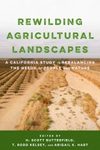By: Cristina Eisenberg(Author)
308 pages, b/w photos, b/w illustrations, b/w distribution maps
![The Carnivore Way The Carnivore Way]()
Click to have a closer look
About this book
Contents
Customer reviews
Biography
Related titles
About this book
What would it be like to live in a world with no predators roaming our landscapes? Would their elimination, which humans have sought with ever greater urgency in recent times, bring about a pastoral, peaceful human civilization? Or in fact is their existence critical to our own, and do we need to be doing more to assure their health and the health of the landscapes they need to thrive?
In The Carnivore Way, Cristina Eisenberg argues compellingly for the necessity of top predators in large, undisturbed landscapes, and how a continental-long corridor – a "carnivore way" – provides the room they need to roam and connected landscapes that allow them to disperse. Eisenberg follows the footsteps of six large carnivores – wolves, grizzly bears, lynx, jaguars, wolverines, and cougars – on a 7500-mile wildlife corridor from Alaska to Mexico along the Rocky Mountains. Backed by robust science, she shows how their well-being is a critical factor in sustaining healthy landscapes and how it is possible for humans and large carnivores to coexist peacefully and even to thrive.
University students in natural resource science programs, resource managers, conservation organizations, and anyone curious about carnivore ecology and management in a changing world will find a thoughtful guide to large carnivore conservation that dispels long-held myths about their ecology and contributions to healthy, resilient landscapes.
Contents
Introduction: Journey into Wildness
PART I. Wildways
Chapter 1. Corridor Ecology and Large Carnivores
Chapter 2. The Ecological Role of Large Carnivores
Chapter 3. Crossings
PART II. Where the Carnivores Roam
Chapter 4. Grizzly Bear (Ursus arctos)
Chapter 5. Wolf (Canis lupus)
Chapter 6. Wolverine (Gulo gulo luscus)
Chapter 7. Lynx (Lynx canadensis)
Chapter 8. Cougar (Puma concolor)
Chapter 9. Jaguar (Panthera onca)
Conclusion: Earth Household
Notes
Glossary
About the Author
Index
Customer Reviews
Biography
Cristina Eisenberg holds a postdoctoral appointment at Oregon State University, in the College of Forestry, where she conducts trophic cascades research focusing on wolves and teaches ecological restoration and public policy. Dr. Eisenberg has authored multiple peer-reviewed scientific and literary journal articles and several book chapters. Her first book, The Wolf's Tooth: Keystone Predators, Trophic Cascades and Biodiversity, was published in 2010 by Island Press.
By: Cristina Eisenberg(Author)
308 pages, b/w photos, b/w illustrations, b/w distribution maps
"Using personal anecdotes of encounters with North America predators, supplemented by the results of a number of studies, Eisenberg makes a case for the place of carnivores in the wild."
– Publishers Weekly
"Ecologist Cristina Eisenberg travels wildlife corridors between Alaska and northern Mexico, focusing on six species: the grizzly bear, wolf, wolverine, lynx, cougar and jaguar. Examining the science and public policy surrounding these majestic creatures, she argues that we need to give them room to roam – and we can do it in a way that allows us to peacefully coexist."
– Conservation
"[A]n eminently readable primer on predator ecology."
– Booklist
"In this call for a unified vision in conservation, ecologist Cristina Eisenberg argues that big carnivores such as grizzly bears underpin the corridor's ecological health, and need it in turn for dispersal into new territory. She interweaves multiple skeins of science – on predator population resilience, the success of wildlife crossings and more – to build a putative scenario of human-carnivore coexistence."
– Nature
"In The Carnivore Way, ecologist Cristina Eisenberg argues for the protection of North America's big predators and their expansive habitats. As a researcher, she illustrates the creatures' ecological importance as linchpins of their ecosystems, affecting the populations and dynamics not only of their prey, but of trophic levels throughout the system. She also urges cooperation among the various stakeholders whose livelihoods are impacted by the presence of large carnivores. Coexistence with carnivores is her steady mantra."
– The Scientist
"Carnivores are challenging animals to think about, and we tend to get distracted by their sharp teeth and meat-eating ways. But they have much to teach us about the landscapes we live in, the ecology of our home places, and our own ability to adapt, learn, and coexist. Nobody knows this beter than Cristina Eisenberg, and no one is a more insightful guide into the world of these fascinating wild neighbors."
– Kevin Van Tighem, Author of Bears: Without Fear and The Homeward Wolf
"An impressive synthesis of conservation and science, The Carnivore Way is the road map for carnivore conservation and connected landscapes in North America's Rocky Mountains. With keen insights into carnivores' roles in ecosystems, their behaviors, and their complex relationships with humans, Cristina Eisenberg compels us to unerstand why carnivores are essential to the health of ecosystems and our need to coexist with them."
– Jodi A. Hilty, North American Program Executive Director, Wildlife Conservation Society
"Eisenberg investigates the extensive cascading biological medicine wheel we know as the natural world, continuing to prove carnivore coexistence is fundamental to our own survival – inextricable. The Carnivore Way makes a remarkable case for immediate overhaul of human intrusion. Our brothers and sisters in other forms depend on us to get this right and their wellbeing distinguishes our own sustained presence. Genius narrative, essential knowledge, this book si beautiful lifeblood."
– Allison Adelle Hedge Coke, Author of Blood Run & Streaming and editor of Sing: Poetry of the Indigenous Americas
"With characteristic insight and clarity, Cristina Eisenberg paints the large-carnivore story across a vast canvas. Few can boil down the essentials like Eisenberg in prose that both informs and inspires. She has come through again with an engaging read about iconic species that put to the test our willingness to coexist with other life forms."
– Douglas W. Smith, Senior Wildlife Biologist, Yellowstone National Park
















![Atlas des Mammifères Sauvages de France, Volume 3: Carnivores et Primates [Atlas of Wild Mammals of France, Volume 3: Carnivores and Primates]](http://mediacdn.nhbs.com/jackets/jackets_resizer_medium/26/263780.jpg?height=150&width=106)






